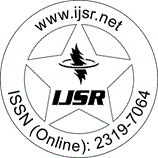Downloads: 49
India | Architecture and Planning | Volume 14 Issue 10, October 2025 | Pages: 1072 - 1079
Biomimicry and Biophilia in Micro-Apartment Design: Nature-Inspired Frameworks for Sustainable and Restorative Urban Living
Abstract: Urban densification and rising housing demands have intensified the need for sustainable and psychologically restorative living environments. This paper explores the integration of biomimetic and biophilic principles in the design of micro-apartments to enhance sustainability, resource efficiency, and occupant well-being. Through a qualitative, interpretive analysis of natural analogues and architectural case studies, the research identifies how nature-inspired systems, ranging from termite mound ventilation and lotus leaf hydrophobicity to honeycomb structural organization, can inform space optimization, thermal regulation, and water conservation in compact dwellings. Complementarily, biophilic design strategies such as light diffusion, fractal geometries, and organic materials are proposed to mitigate psychological confinement and improve perceived spaciousness. The study culminates in a Biomimetic?Biophilic Framework for Micro-Apartments that synthesizes form, function, and sensory design to create low-impact, regenerative urban housing. Findings highlight how mimicking ecological systems can reduce energy loads, material waste, and stress levels, offering a replicable pathway toward human-cantered sustainable architecture in high-density cities.
Keywords: Biomimicry in Architecture, Biophilic Design, Sustainable Housing, Micro-apartments, Micro-spaces, Small Houses, Urban Well-Being, Sustainability, Sustainable Design, Environment-Friendly Housing, Nature-Inspired Architecture
How to Cite?: Inaya Gala, "Biomimicry and Biophilia in Micro-Apartment Design: Nature-Inspired Frameworks for Sustainable and Restorative Urban Living", Volume 14 Issue 10, October 2025, International Journal of Science and Research (IJSR), Pages: 1072-1079, https://www.ijsr.net/getabstract.php?paperid=SR251020230540, DOI: https://dx.doi.org/10.21275/SR251020230540
Rate This Article! View 4 Comments
